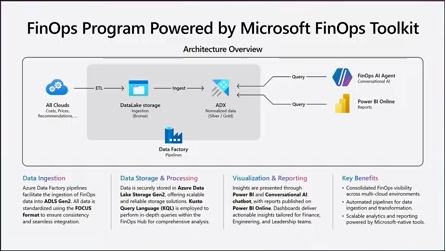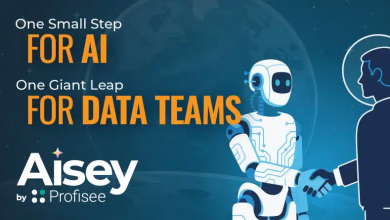How Levi’s is Transforming Their IT Estate with Azure
Learn how Levi’s transformed its global IT estate—including Windows Server, SQL Server, SAP, Oracle, and more—through a comprehensive migration and modernization strategy.
Levi Strauss & Co., the iconic denim brand with roots dating back to 1853, is no stranger to reinvention.
From pioneering riveted work pants for Gold Rush miners to becoming a symbol of youth culture with its 501 jeans, Levi’s has continually adapted to stay relevant.
Today, that evolution extends to its IT infrastructure, where the company is undergoing a comprehensive transformation using Microsoft Azure. In a compelling session at Microsoft Ignite, Levi’s IT leaders Michael Womack and Shawn Harris shared insights into their multi-year journey to migrate from legacy data centers to the public cloud.
Learn how they combined data and app modernization with infrastructure re-platforming to unlock agility, scalability, and cost savings. This real-world story will highlight the strategy, lessons learned, and tangible business outcomes that came from taking an end-to-end approach to migration and modernization.
Levi’s Storied History and the Imperative for Change
The talk opened with a nod to Levi’s enduring legacy. Founded in San Francisco by Levi Strauss and Jacob Davis, who patented the riveted denim pant in 1873, the company has spent over 170 years innovating to meet shifting consumer needs. Womack emphasized how Levi’s has always balanced tradition with forward-thinking—much like its current IT overhaul, which positions Microsoft Azure as the foundation for the brand’s next century of growth.
This historical context set the stage for why change was necessary. Levi’s operated five on-premises data centers across the US (two), Brussels, Singapore, and Los Angeles. These facilities were highly automated, enabling rapid provisioning of services, but they came with significant overhead: routine maintenance like UPS testing, firmware updates, and hypervisor patching diverted resources from innovation.
Navigating Legacy Challenges and Embracing the Public Cloud
By 2017-2018, Levi’s recognized the limitations of its private cloud setup. While efficient, it couldn’t match the pace of public cloud advancements in scalability and agility. The decision to migrate aligned with hardware refresh cycles, starting with a pilot in Singapore in 2021 to build expertise. The goal: fully exit private data centers by June 2026, with the largest US migration still underway.
Harris detailed the operational burdens, including non-value-adding tasks that stifled progress. Public cloud promised relief, but success required a mindset shift—treating cloud adoption not as a lift-and-shift but as an opportunity to reimagine operations.
Keys to a Successful Cloud Migration
Womack outlined Levi’s “keys to success,” a blueprint for others embarking on similar journeys:
- Unified Teams and Automation-First Approach: Ditch siloed structures; form cross-functional teams handling everything from networking to security. Build on existing automation while embracing cloud-native tools.
- Strategic Workload Placement: Use blueprints to position compute near customers for optimal latency, leveraging Azure templates for consistency.
- Robust Connectivity: Implement ExpressRoute and SD-WAN for seamless hybrid environments.
- FinOps Discipline: Centralize cost management with consumer accountability—assign budgets, monitor monthly, and trigger alerts for anomalies. This has kept Levi’s under budget annually, with no surprises.
These principles turned potential pitfalls into efficiencies, enabling Levi’s to provision services faster and focus on business value.
Building Internal Expertise Through Incremental Migration
Starting with just one cloud engineer, Levi’s scaled its team organically. Traditional IT staff upskilled during migrations, transitioning from managing on-premises tools (Windows Server, SQL Server, SAP, Oracle) to Azure equivalents like Azure Kubernetes Service (AKS) and Azure SQL Managed Instance.
Rightsizing was a game-changer: On-premises bloat from oversized hardware was culled using Azure’s pre- and post-migration tools, yielding immediate cost savings and performance gains. Harris stressed starting small—mastering VMs before tackling complex services like load balancers and databases—to build confidence and competence.
Infusing AI into Everyday IT Workflows
Innovation didn’t stop at migration. Levi’s is embedding AI to supercharge operations, from predictive incident response for technicians to AI-assisted project planning for engineers. This integration enhances response times, boosts efficiency, and aligns IT with Levi’s customer-centric ethos, ensuring the brand remains agile in a fast-fashion world.
Hard-Earned Lessons: Pitfalls and Proactive Strategies
No transformation is without hiccups. Harris shared a cautionary tale: Migrating a web cluster without full monitoring led to a usage spike post-launch, forcing a temporary rollback. The lesson? Scrutinize application groupings, usage patterns, and interconnectivities upfront.
Costing oversights, like overlooking batch cycles, also surfaced as “gotchas.” Levi’s countered with rigorous pre-migration audits and ongoing optimization, including a 20% utilization buffer and monthly reviews to identify savings opportunities.
Q&A: Scale, Team Dynamics, and Future Excitement
The session’s Q&A delved into logistics: Levi’s is migrating ~2,000 VMs and petabytes of data with a 39-person global team, all engineer-certified. Early Microsoft support tapered as internal skills grew, with business cases tied to tangible outcomes like lease expirations.
Security follows zero-trust principles, integrated via close partnership with Levi’s teams. Post-migration perks include centralized innovation, flexibility, and AI readiness. Cost analyses factor in “hidden” data center expenses (e.g., chillers, power), confirming savings through tools like Azure Cost Management.
Mastering Costs with a Custom FinOps Program
A standout element was Levi’s FinOps evolution. From a third-party tool to a bespoke solution using Microsoft’s PhonOps toolkit, Azure Data Factory, Data Lake Storage, and Power BI, it visualizes spend, detects anomalies, and automates alerts—soon enhanced by Copilot. Consumers foot the bill, fostering accountability, while centralized oversight prevents sprawl. Result: Proactive governance and consistent under-budget performance.

Levi’s Azure journey exemplifies how legacy giants can harness cloud power for reinvention. By prioritizing people, process, and prudence, the company isn’t just modernizing IT—it’s fueling sustainable growth for generations to come.



